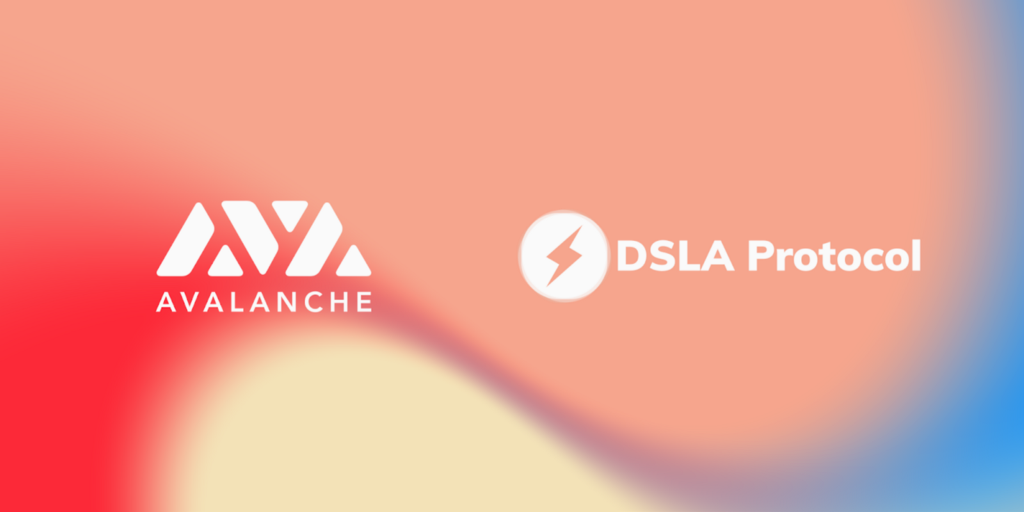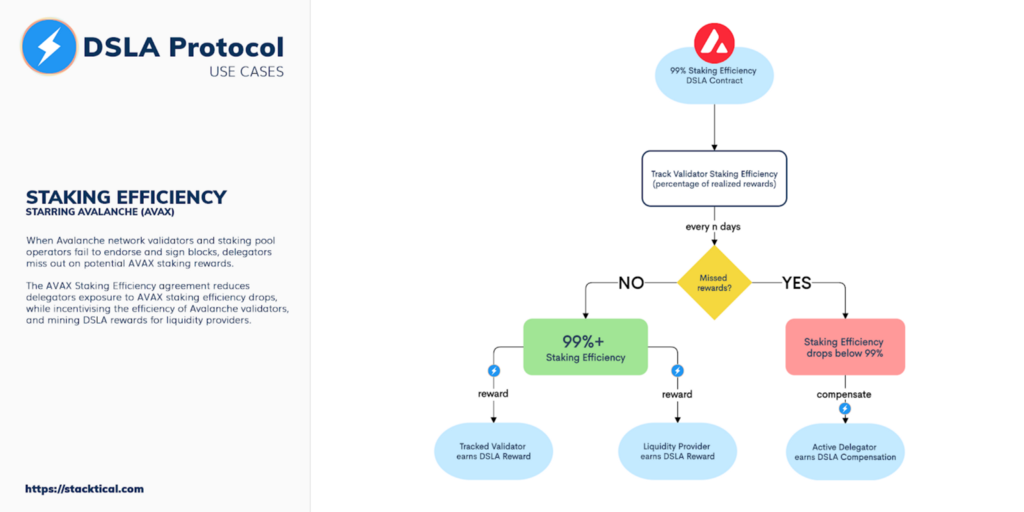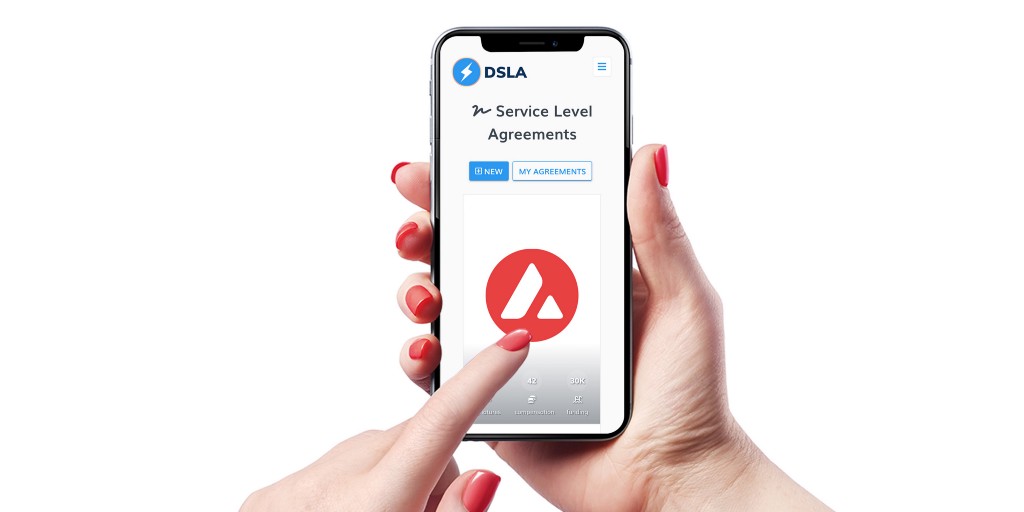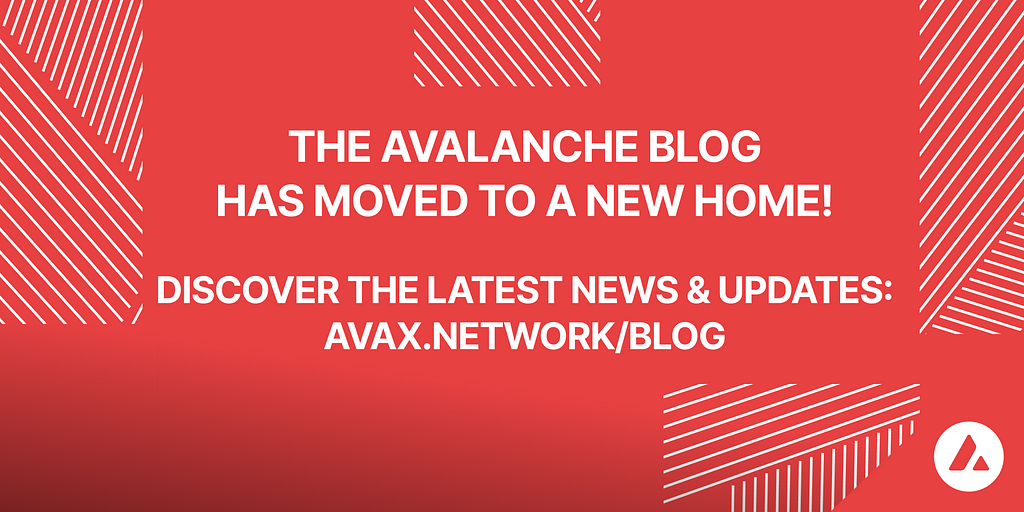DSLA Protocol Launching Infrastructure Risk Management Tools for Avalanche Developers
DSLA Maxima “Avalanche Edition” enables builders to reduce users’ exposure to infrastructure risk, while incentivizing connectivity & performance.

DSLA Protocol is integrating with Avalanche, enabling delegators and node operators to manage the risks of their underlying infrastructures. Its initial work will add support for AVAX Staking Agreements to the DSLA.network flagship application and is expected to be completed in March 2021.
Long term, the DSLA core development team will launch DLSA Maxima “Avalanche Edition,” enabling developers to add high-throughput, risk management, and parametric insurance capabilities to their application built on Avalanche. Anyone will be able to add service level agreements (SLAs) on top of third-party services.
These agreements can reduce users’ exposure to infrastructure risks such as staking efficiency drops and impermanent loss while incentivizing the performance and availability of services, networks, and applications over time. This means peace-of-mind when validating or delegating on Avalanche, providing liquidity on decentralized exchanges, and more.
Protecting Delegators and Node Operators
Successfully validating or delegating on Avalanche requires a validator to be correct and online for 60% of its defined staking period to receive rewards. If parameters like uptime percentages aren’t met, rewards are not distributed. Unlike existing blockchain platforms, Avalanche does not slash your stake.
When delegating on Avalanche, you’re relying on existing validators to fulfill the staking requirements on your behalf (hence why users are subject to additional fees set by validators). Therefore for delegators, meeting these parameters is in the hands of third-party service providers.
DSLA provides a better way to manage exposure to third-party infrastructure risk. When the monitored performance of a service (in this case, the ability for delegators to meet the Avalanche staking parameters) stays within the thresholds of an agreement, DSLA contract liquidity providers earn the right to claim a bonus from the agreement’s liquidity pool. Conversely, when an agreement is violated because of the bad performance of a service, DSLA contract policyholders earn the right to claim compensation.

AVAX SLAs compensate AVAX delegators for drops in AVAX staking rewards while rewarding AVAX staking pool operators for their ability to endorse and validate Avalanche blocks, and mining DSLA rewards for liquidity providers.
Soon after, DSLA Protocol will be deployed as smart contracts on Avalanche, serving the same purpose, but with built-in interoperability and scalability that are unique to Avalanche, hence the “Maxima” codename.
To learn more about DSLA Protocol, please visit stacktical.com, browse their official blog, and follow @stacktical on Twitter.

About Avalanche
Avalanche is an open-source platform for launching decentralized applications and enterprise blockchain deployments in one interoperable, highly scalable ecosystem. Avalanche is the first smart contracts platform that processes 4,500+ transactions/second and instantly confirms transactions. Ethereum developers can quickly build on Avalanche as Solidity works out-of-the-box.
Website | Whitepapers | Twitter | Discord | GitHub | Documentation | Forum | Avalanche-X | Telegram | Facebook | LinkedIn | Reddit | YouTube
About DSLA Protocol
DSLA Protocol is a risk management framework that enables developers and infrastructure operators to reduce their users’ exposure to service delays, interruptions, and financial losses, using self-executing service level agreements, bonus-malus insurance policies, and crowdfunded liquidity pools.
Website | Whitepaper | Deck | Telegram | Reddit | GitHub | Facebook | Instagram | LinkedIn | YouTube
![]()
DSLA Protocol Launching Infrastructure Risk Management Tools for Avalanche Developers was originally published in Avalanche on Medium, where people are continuing the conversation by highlighting and responding to this story.


